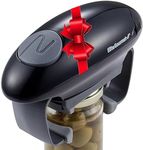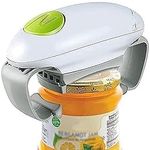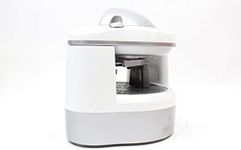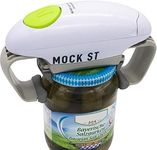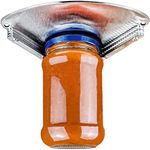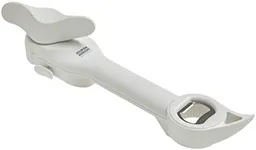Buying Guide for the Best Jar Openers
Choosing the right jar opener can make a big difference in your kitchen, especially if you often struggle with tight lids or have limited hand strength. The best jar opener for you will depend on your needs, the types of jars you use most, and any physical limitations you might have. Understanding the key features will help you find a tool that makes opening jars easier, safer, and more comfortable.Type of OpenerJar openers come in several types, such as manual handheld openers, under-cabinet mounted openers, electric openers, and rubber grip pads. The type refers to the basic design and how you use it. Manual openers are simple and portable, under-cabinet models are fixed and great for frequent use, electric openers require minimal effort, and grip pads are basic but effective for some users. If you have limited hand strength or arthritis, electric or under-cabinet models may be best. For occasional use or travel, a manual or grip pad might be enough.
Grip and Handle DesignThe grip and handle design affects how comfortable and secure the opener feels in your hand. Some openers have wide, cushioned handles for better comfort, while others are slim or made of hard plastic. A good grip is important to prevent slipping and reduce strain. If you have small hands or weak grip, look for openers with ergonomic, non-slip handles. If you have strong hands, you might not need as much padding or contouring.
Adjustability and Size RangeAdjustability refers to how well the opener can fit different jar lid sizes. Some openers are fixed and only work with certain sizes, while others can be adjusted to fit a wide range of lids. If you open many different types of jars, choose an opener with a wide adjustability range. If you mostly open the same size jars, a fixed-size opener may be sufficient.
Ease of UseEase of use is about how simple and effortless the opener is to operate. Some openers require a lot of twisting or squeezing, while others do most of the work for you. If you have limited dexterity or strength, look for openers that require minimal effort, such as electric models or those with leverage mechanisms. If you don’t mind a bit of manual effort, a basic handheld opener may be fine.
Cleaning and MaintenanceCleaning and maintenance refers to how easy it is to keep the opener hygienic and in good working order. Some openers are dishwasher safe, while others need to be hand-washed. Simpler designs are usually easier to clean, while electric or more complex models may have parts that need special care. If you want something low-maintenance, look for openers with few parts and easy cleaning instructions.
Storage and PortabilityStorage and portability are about how easy it is to store the opener when not in use and whether you can take it with you if needed. Some openers are compact and fit in a drawer, while under-cabinet models are fixed in place. If you have limited kitchen space or want to take the opener on trips, choose a compact, lightweight model. If you want a permanent solution, an under-cabinet opener might be best.

